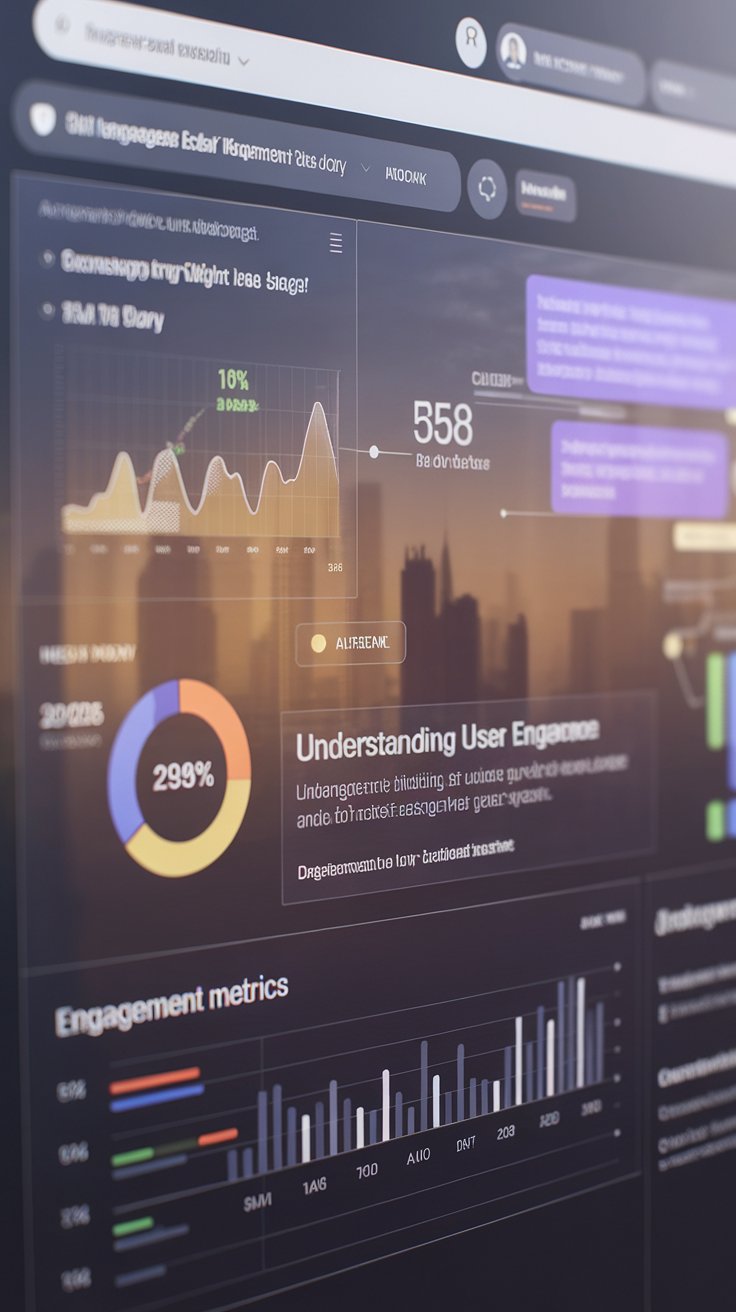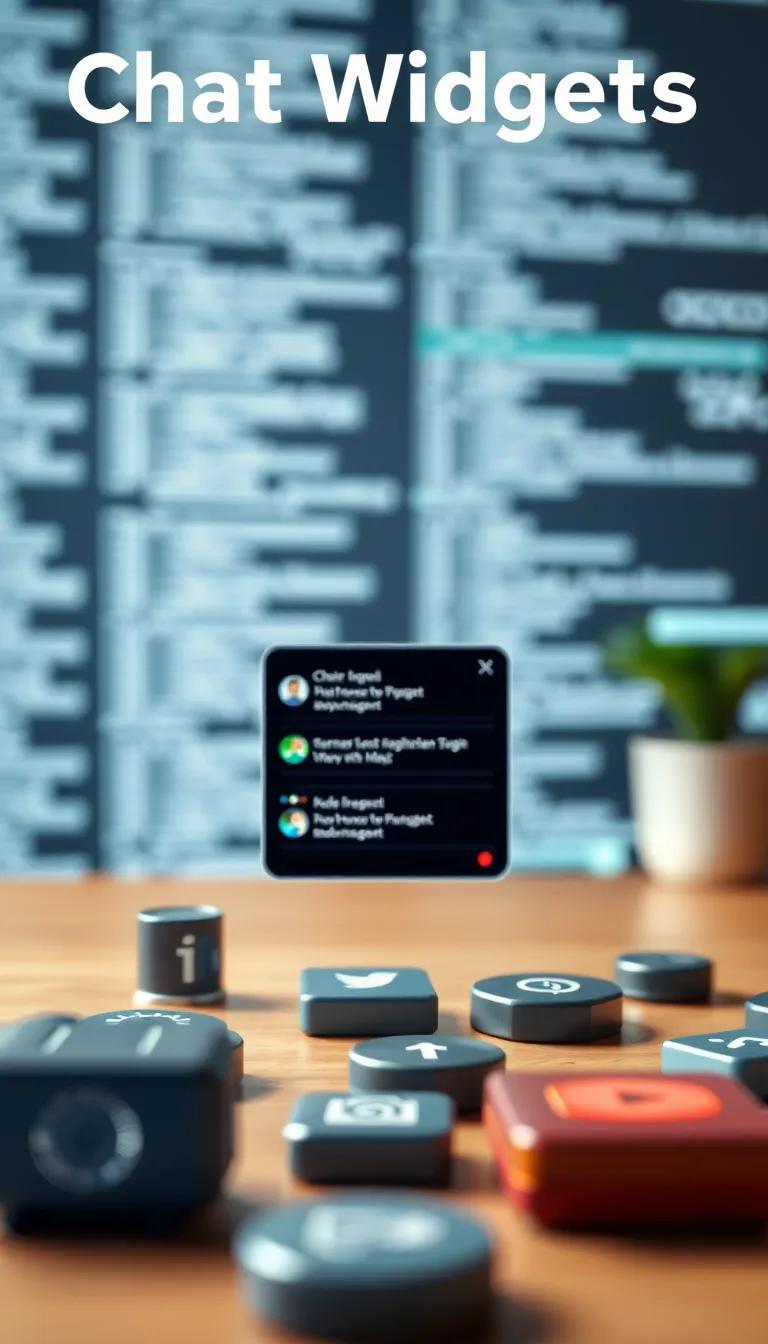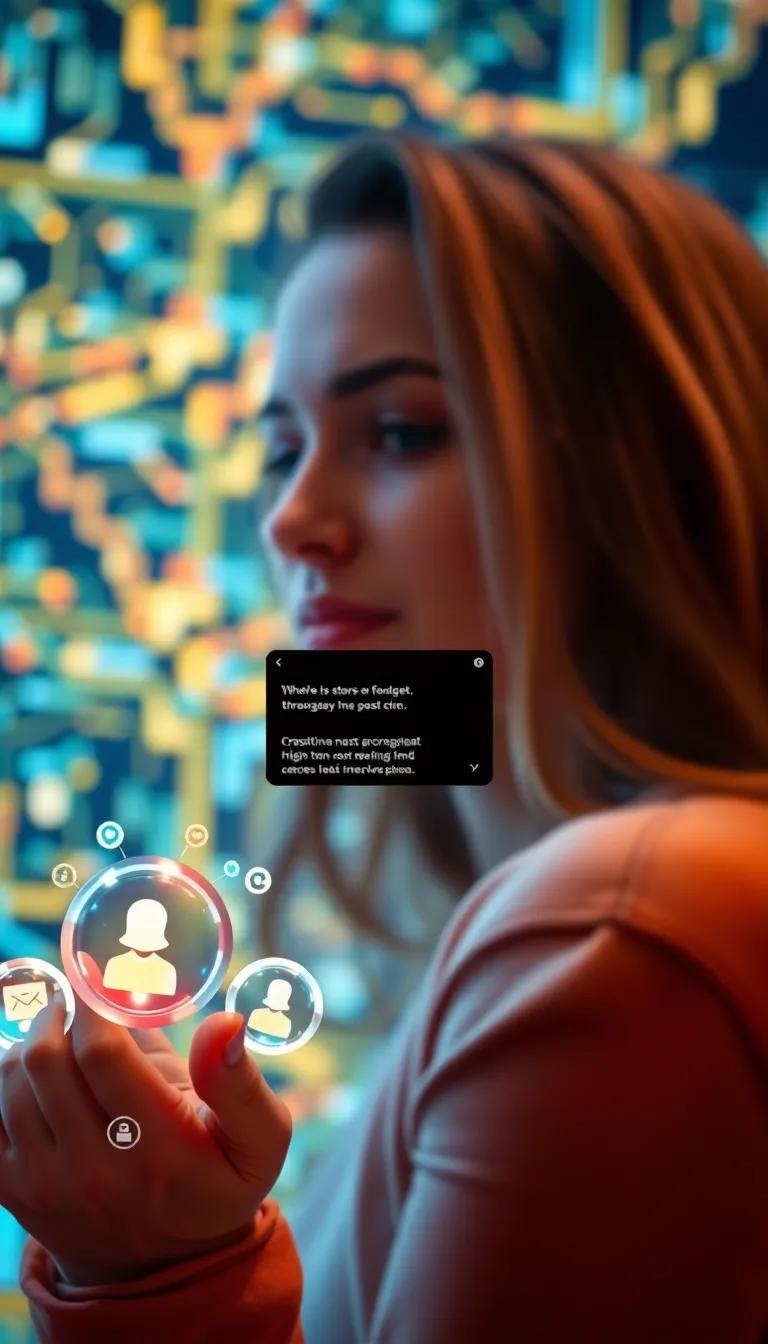Introduction
User engagement is a crucial factor in determining the success of online platforms. By fostering meaningful interactions between users and a brand, businesses can cultivate loyalty, drive conversions, and distinguish themselves in the competitive digital market. In this article, we will explore how the implementation of free website chat widgets can significantly enhance user engagement, offering a more personalized and interactive experience. The journey commences with understanding the essence of user engagement, delving into key tactics for leveraging chat widgets effectively.
Many visitors prefer immediate responses and interactive content, which is where chat widgets come into play. These tools not only facilitate real-time communication but also collect valuable feedback to refine user experiences. We will discuss various approaches to maximize the potential of chat widgets, including their integration strategies and customer interaction techniques. By looking at real-world applications and examples, we aim to provide actionable insights to elevate user engagement through the use of chat widgets.
Understanding User Engagement Its Significance and Impact on Business Success
User engagement is a vital concept in the realm of digital interactions, representing the level of involvement users have with a brand, product, or service. It encompasses various metrics, including website visits, time spent on site, social media interactions, and outright conversions. In today’s competitive landscape, emphasizing user engagement can significantly affect a business’s success and longevity. Engaged users are more likely to become loyal customers, advocates for a brand, and participants in community building.
Engagement can take many forms, both online and offline. Online engagement typically includes actions such as reading blog posts, commenting on social media, participating in forums, and utilizing interactive features like polls and chat widgets. Conversely, offline engagement often involves personal interactions, customer service experiences, and community events. While both forms are designed to create connections, their approaches differ. Online engagement is often instantaneous and momentary, whereas offline engagement tends to build deeper, long-term relationships.
The importance of user engagement cannot be understated. High levels of engagement often correlate with increased customer retention, higher average transaction values, and improved brand perception. When users engage with content, they are likely to absorb information more thoroughly, making them more predisposed to take the next step in the purchasing journey. This connection cultivates a sense of trust, which is invaluable for brands operating in crowded markets.
Engagement strategies should be multifaceted to address the diverse needs and preferences of users. Strategies may include providing personalized content, creating interactive platforms, facilitating user-generated content, and maintaining an active social media presence. Furthermore, using tactics such as sentiment analysis can help identify user satisfaction levels, revealing insights that can inform future engagement initiatives.
Understanding user engagement and its various forms is key to enhancing interaction within any digital platform. As businesses increasingly rely on online channels, recognizing the significance of engagement in driving success is paramount. Companies that prioritize user engagement not only foster loyalty but also cultivate a community, leading to sustainable growth and a competitive advantage.
Chat Widgets as Engagement Tools Understanding Their Functionality
Exploring Chat Widgets
Chat widgets are interactive elements embedded within websites designed to facilitate real-time conversations between users and businesses. They serve a dual purpose: providing immediate assistance to users while gathering valuable insights for businesses. Positioned typically at the bottom corner of a website, these widgets often take the form of chat boxes or pop-up dialogs, allowing site visitors to initiate conversations effortlessly.
The primary function of chat widgets is to enhance user interaction by addressing inquiries, providing support, and guiding users through various processes. Unlike traditional forms of contact, such as email or phone calls, chat widgets offer quick interactions that can lead to immediate resolutions and higher user satisfaction rates.
Technological Background and Prevalence
The technology powering chat widgets relies on real-time communication protocols, such as WebSocket, which enables bidirectional communication between the client and the server. This ensures that messages are sent and received almost instantaneously. In contrast to conventional messaging platforms, chat widgets leverage cloud computing resources, allowing businesses to manage extensive communications without the limitations of on-premises infrastructure.
Over the years, the adoption of chat widgets has surged, fueled by advancements in artificial intelligence and machine learning. Many modern chat widgets incorporate AI-driven chatbots capable of handling a variety of customer queries and learning from interactions to improve responses over time. This integration not only streamlines communication but also allows businesses to operate more effectively, offering 24/7 support without the need for continuous human intervention.
As user preferences evolve, the presence of chat widgets has become almost ubiquitous on websites across diverse industries. Businesses recognize that customer engagement is vital for maintaining relationships and driving sales, which propels them to implement these tools to capture user attention and encourage interaction. The growing prevalence of mobile and online commerce further fuels the demand for chat widgets, making them an integral part of modern web interfaces.
Chat widgets stand as key engagement tools in the digital landscape, facilitating meaningful interactions and enhancing user experiences. Their foundation in innovative technology, coupled with widespread adoption, underscores their effectiveness in increasing user engagement on websites.
Integrating Chat Widgets into Your Website User Engagement Strategies through Technical Optimizations
Technical Considerations for Chat Widget Integration
Integrating chat widgets into your website involves a series of technical steps designed to enhance user engagement seamlessly. First, select a chat widget platform that aligns with your specific needs. Popular options include Tawk.to, Crisp, and LiveChat, which offer free versions with basic functionalities. Once you’ve chosen your platform, follow the installation instructions carefully, typically involving the addition of a JavaScript snippet to your site’s HTML. Place this snippet just before the closing tag to ensure that the widget loads after the main content. This approach minimizes any disruption to website loading speeds.
Another technical consideration is the compatibility with various devices and browsers. Ensure that your chat widget is responsive and works smoothly across mobile and desktop interfaces. A significant portion of web traffic comes from mobile devices, so testing on different screen sizes is paramount.
User Interface Adjustments for Enhanced Interaction
To optimize the user interface of your chat widget, focus on customization options. Tailor the appearance—such as colors, fonts, and icons—to match your website’s branding. This helps create a unified experience, making users feel more comfortable interacting with the chat feature. Furthermore, position the chat widget in a way that is easily accessible without obstructing important content. Common placements include the bottom right of the screen, which is typically where users expect to find chat options.
Another important aspect of user interface adjustments involves setting up proactive triggers. For instance, configure the widget to appear after a user has spent a certain amount of time on a page or when they are about to exit. These proactive invitations can significantly enhance engagement rates by prompting users to ask questions or seek assistance.
Consider including a clear and concise welcome message that invites interaction. This message should be friendly and informative, quickly letting users know how they can seek help or information. By carefully integrating technical elements and optimizing the user interface, you create an effective chat widget that serves as a powerful tool for boosting engagement on your website.
Engagement Techniques Using Chat Widgets Boost User Interaction with Proactive Tactics
Proactive Chat Invitations Tailored to User Behavior
Proactive chat invitations serve as an effective means for increasing user engagement on your website. These invitations can be based on a range of user behaviors, such as time spent on a particular page, scrolling habits, or even previous interactions with the chat widget itself. By implementing a proactive chat invite strategy, you can meet your users at critical junctures in their journey, prompting them to interact and seek assistance before they even consider leaving your site.
For instance, if a user spends more than 30 seconds on a pricing page without taking any action, a well-timed chat invitation can pop up, offering assistance or additional information. This approach not only provides an opportunity to address potential questions but also makes users feel valued and supported. Tailoring these invitations to match user behavior makes them more relevant and less intrusive, thereby enhancing the overall user experience.
Tailored Responses to Enhance User Interaction
Another effective strategy is to use tailored responses based on user behavior and preferences. Chat widgets equipped with smart algorithms can analyze user data, such as demographic information, previous chat logs, and browsing patterns, allowing for more personalized interactions. For instance, if a returning customer has previously shown interest in a specific product category, the chat can proactively engage them with suggestions or information regarding new arrivals in that category.
Incorporating a decision tree within the chat widget helps guide the conversation more efficiently. By anticipating common queries and providing quick responses or options, you can keep users engaged without overwhelming them with superfluous information. This quick access to relevant content and troubleshooting can significantly decrease the chances of a user departing from your site in frustration.
Integrating proactive chat invitations and personalized responses not only encourages user interaction but builds a relationship with your visitors. These approaches can transform the chat widget from a passive element into an active part of the user experience, ultimately fostering greater engagement. By leveraging these tactics, websites can create more meaningful interactions, leading to increased satisfaction and loyalty from users.
Measuring User Engagement Success Effective Chat Widget Metrics
Evaluating the effectiveness of chat widgets in driving user engagement involves a careful assessment of several key performance indicators (KPIs) and metrics. By understanding these metrics, businesses can directly gauge the impact of chat integrations on user interactions, satisfaction, and ultimately, conversion rates.
Critical Metrics for Assessment
When measuring user engagement success through chat widgets, consider the following essential metrics:
- Chat Volume: This metric captures the total number of chats initiated by users. A higher chat volume generally indicates that users are finding the feature accessible and engaging.
- Response Time: The speed at which agents respond to user queries is vital. Shorter response times correlate with higher satisfaction rates, encouraging users to continue interactions.
- Chat Duration: Monitoring how long users stay engaged in a chat can indicate the effectiveness of the chat widget. Longer sessions often equate to deeper engagement.
- Resolution Rate: The percentage of inquiries successfully resolved during the chat session is a key indicator of the chat widget’s effectiveness. High resolution rates suggest that users find the widget helpful and relevant.
- User Feedback: Gathering qualitative data through post-chat surveys can provide direct insights into user experience, highlighting strengths and areas for improvement.
Assessing User Engagement Outcomes
In addition to individual metrics, analyzing user engagement outcomes is essential. Metrics such as engagement rate, which measures the percentage of users who interact with the chat widget versus total site visitors, can highlight the widget’s overall impact on user behaviors.
Another useful metric is the conversion rate of users who engage with the chat widget. Tracking this can help assess whether chat interactions contribute to desired actions, such as purchases or lead submissions. A strong correlation between chat usage and conversions can validate the widget’s role in driving user engagement.
Using analytics tools to compile and analyze these data points over time enables businesses to evaluate trends and make data-driven decisions. Continuous monitoring allows for adjustments to the chat strategy, ensuring that the widget evolves alongside user preferences and expectations.
A comprehensive measurement approach that includes both quantitative and qualitative metrics provides a robust framework to assess the efficacy of chat widgets in enhancing user engagement on your site.
Future Trends in User Engagement and Chat Technology
Advances in AI and User Preferences
The intersection of user engagement and chat technology is continually shifting, driven by advancements in artificial intelligence and changing user preferences. As chat widgets become more intelligent, they will possess the capability to deliver increasingly personalized experiences. The evolution of AI models will enable chatbots to not only respond but also predict user needs based on historical interaction data. This is particularly relevant as organizations strive to maintain a competitive edge in deepening customer relationships.
Users are now expecting seamless interactions across multiple platforms. They prefer chat interfaces that can integrate with various communication channels such as social media, email, and even voice technology. The demand for consistency in responses, regardless of the platform used, will push chat technology toward even greater integration and synchronization. This trend leads to the emergence of omnichannel support systems, where chat widgets function as the central hub for communication.
Potential Shifts in Digital Communication
The shift towards visual and interactive content is another emerging trend impacting how users engage with chat technologies. Incorporating features like video responses and interactive carousels into chat widgets is becoming increasingly popular. Rather than simple text exchanges, brands will provide richer content that fosters deeper interactions. Users may prefer to interact through visual dialogues rather than just plain chat, which encourages higher engagement levels.
As privacy concerns continue to shape user behavior, there will be an increased emphasis on transparent communication. Brands will need to ensure that users are aware of how their data will be used, offering clear opt-in and opt-out options. This transparency not only builds trust but may also result in enhanced user engagement, as customers feel more secure in sharing their information.
Looking towards the future, the incorporation of features like augmented reality (AR) into chat interactions is also on the horizon. Imagine users reaching out to chat widgets that can visually demonstrate products or services, creating an interactive experience that bridges the gap between offline and online engagement. The fusion of technology and human-centric design is poised to redefine how brands communicate with their audiences, ultimately driving user engagement to unprecedented levels.
Conclusions
Enhancing user engagement through free website chat widgets is not just about added functionality; it’s about transforming user interactions into meaningful conversations that ultimately drive value for both the user and the business. We have examined how these widgets bridge the gap between brand and customer, allowing for personalized communication that meets the immediate needs of site visitors.
Implementing the tactics discussed in this article will empower businesses to engage their users more effectively, leading to improved satisfaction and retention rates. As these chat tools continue to evolve, embracing their potential will be essential for staying ahead in the digital landscape. By leveraging these strategies, organizations can create a more engaging, responsive, and interactive platform that resonates with users and enhances overall brand loyalty.


















